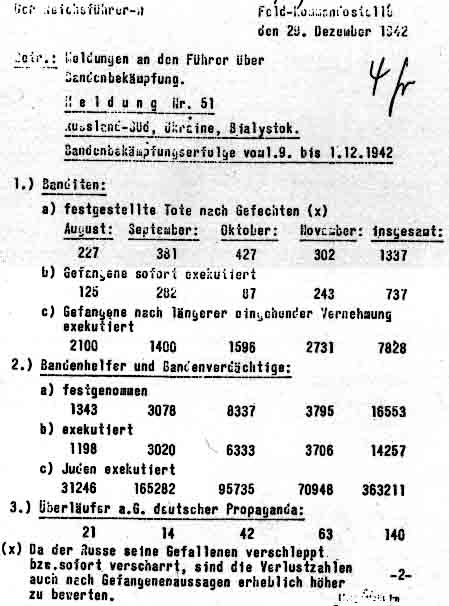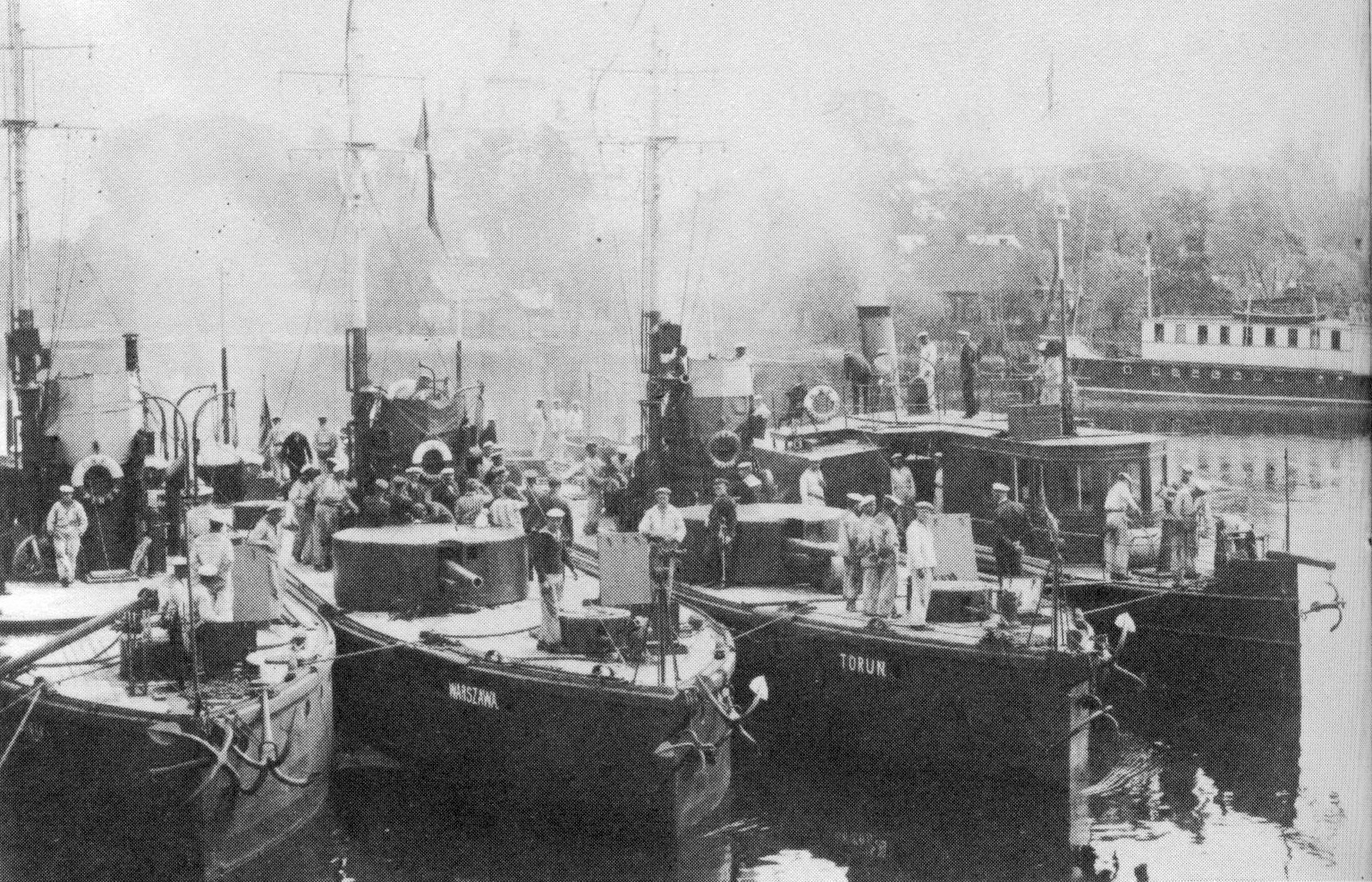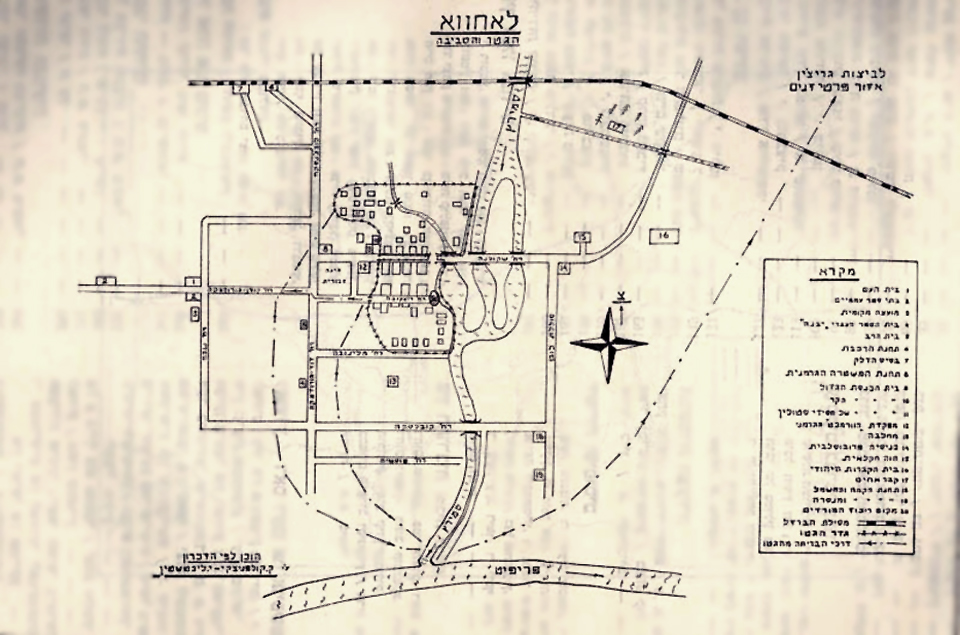|
Police Battalion 306
The Police Battalion 306 (''Polizeibattalion 306'') was a formation of the Order Police (uniformed police) during the Nazi era. During the Soviet-German war of 1941–45, it was deployed in German-occupied areas of the Soviet Union, as part of Nazi Germany's security forces tasked with "bandit-fighting". Alongside other SS and police units, it participated in the Holocaust and was responsible for large-scale crimes against humanity targeting civilian populations. Background and formation The German Order Police was a key instrument of the security apparatus of Nazi Germany. In the prewar period, Heinrich Himmler, the head of the SS, and Kurt Daluege, chief of the Order Police, cooperated in transforming the police force of the Weimar Republic into militarised formations ready to serve the regime's aims of conquest and racial annihilation. The police units participated in the annexation of Austria and the occupation of Czechoslovakia. Police troops were first formed into battal ... [...More Info...] [...Related Items...] OR: [Wikipedia] [Google] [Baidu] |
Bandenbekämpfung
In German military history, ''Bandenbekämpfung'' (German; ), also Nazi security warfare (during World War II), refers to the concept and military doctrine of countering resistance or insurrection in the rear area during wartime through extreme brutality. The doctrine provided a rationale for disregarding the established laws of war and for targeting of any number of groups, from armed guerrillas to the civilian population, as "bandits" or "members of gangs". As applied by the German Empire and later by Nazi Germany, it became instrumental in the mass crimes against humanity committed by the two regimes, including the Herero and Namaqua genocide and the Holocaust. Emergence Concept and origins According to historian and television documentary producer, Christopher Hale, there are indications that the term ''Bandenbekämpfung'' may go back as far as the Thirty Years' War. Under the German Empire established by Bismarck in 1871 after the Franco-Prussian War—formed as a ... [...More Info...] [...Related Items...] OR: [Wikipedia] [Google] [Baidu] |
Einsatzgruppen
(, ; also ' task forces') were (SS) paramilitary death squads of Nazi Germany that were responsible for mass murder, primarily by shooting, during World War II (1939–1945) in German-occupied Europe. The had an integral role in the implementation of the so-called "Final Solution to the Jewish question" () in territories conquered by Nazi Germany, and were involved in the murder of much of the intelligentsia and cultural elite of Poland, including members of the Catholic priesthood. Almost all of the people they murdered were civilians, beginning with the intelligentsia and swiftly progressing to Soviet political commissars, Jews, and Romani people, as well as actual or alleged partisans throughout Eastern Europe. Under the direction of Heinrich Himmler and the supervision of SS- Reinhard Heydrich, the operated in territories occupied by the Wehrmacht (German armed forces) following the invasion of Poland in September 1939 and the invasion of the Soviet Union in Ju ... [...More Info...] [...Related Items...] OR: [Wikipedia] [Google] [Baidu] |
Pinsk
Pinsk ( be, Пі́нск; russian: Пи́нск ; Polish: Pińsk; ) is a city located in the Brest Region of Belarus, in the Polesia region, at the confluence of the Pina River and the Pripyat River. The region was known as the Marsh of Pinsk and is southwest of Minsk. The population is 138,415. The historic city has a restored city centre, with two-storey buildings from the 19th and early 20th centuries. The centre has become an active place for youths of all ages with summer theme parks and a new association football stadium, which houses the city's football club, FC Volna Pinsk. History Timeline up to WWI *In the 9th and 10th centuries, the town of Pinsk was majority Lithuanian *1097 – the first mention of Pinsk * 1241 – transfer of the Orthodox diocese from Turov * 1316 – after this date, Pinsk was incorporated into the Grand Duchy of Lithuania * 1396 – a Catholic church and a Franciscan monastery were erected * 1523 – Pinsk becomes a royal city, first owned by ... [...More Info...] [...Related Items...] OR: [Wikipedia] [Google] [Baidu] |
Pinsk Ghetto
Pinsk ( be, Пі́нск; russian: Пи́нск ; Polish: Pińsk; ) is a city located in the Brest Region of Belarus, in the Polesia region, at the confluence of the Pina River and the Pripyat River. The region was known as the Marsh of Pinsk and is southwest of Minsk. The population is 138,415. The historic city has a restored city centre, with two-storey buildings from the 19th and early 20th centuries. The centre has become an active place for youths of all ages with summer theme parks and a new association football stadium, which houses the city's football club, FC Volna Pinsk. History Timeline up to WWI *In the 9th and 10th centuries, the town of Pinsk was majority Lithuanian *1097 – the first mention of Pinsk * 1241 – transfer of the Orthodox diocese from Turov * 1316 – after this date, Pinsk was incorporated into the Grand Duchy of Lithuania * 1396 – a Catholic church and a Franciscan monastery were erected * 1523 – Pinsk becomes a royal city, first owned by ... [...More Info...] [...Related Items...] OR: [Wikipedia] [Google] [Baidu] |
Łachwa Ghetto
Łachwa (or Lakhva) Ghetto was a Nazi ghetto in Western Belarus during World War II. Located in Lakhva, Belarus), the ghetto was created with the aim of persecution and exploitation of the local Jews. The ghetto existed until September 1942. It was the location of one of the first Jewish ghetto uprisings. Background The first Jews settled in Łachwa, Crown of the Kingdom of Poland, after the Khmelnytsky Uprising (1648-1650). In 1795 there were 157 tax-paying Jewish citizens in Łachwa; already a majority of its inhabitants. Main sources of income were trade in agricultural products and in fishing, expanded into meat and wax production, tailoring, and transportation services. Several decades after the Partitions of Poland by Russia, Prussia and Austria, the railway line Vilna-Luninets-Rivne extended to Łachwa, helping local economies withstand the downturn. In 1897 there were 1,057 Jews in the town. After the formation of Second Polish Republic in the aftermath of World W ... [...More Info...] [...Related Items...] OR: [Wikipedia] [Google] [Baidu] |
Police Battalion 69
The police are a Law enforcement organization, constituted body of Law enforcement officer, persons empowered by a State (polity), state, with the aim to law enforcement, enforce the law, to ensure the safety, health and possessions of citizens, and to prevent crime and civil disorder. Their lawful powers include arrest and the use of force legitimized by the state via the monopoly on violence. The term is most commonly associated with the police forces of a sovereign state that are authorized to exercise the Law enforcement agency powers, police power of that state within a defined legal or territorial area of responsibility. Police forces are often defined as being separate from the military and other organizations involved in the defense of the state against foreign aggressors; however, gendarmerie are military units charged with civil policing. Police forces are usually public sector services, funded through taxes. Law enforcement is only part of policing activity. Policin ... [...More Info...] [...Related Items...] OR: [Wikipedia] [Google] [Baidu] |




